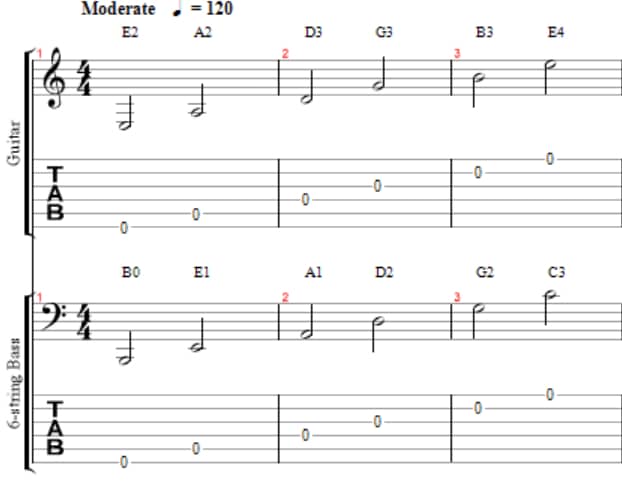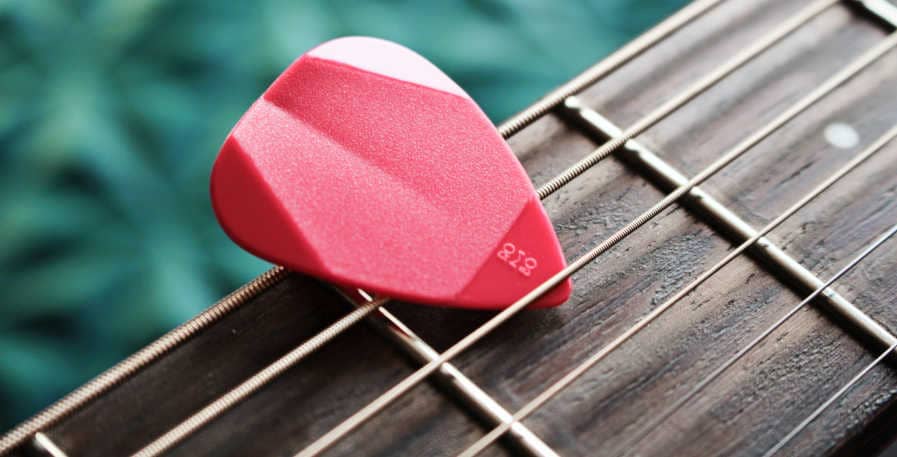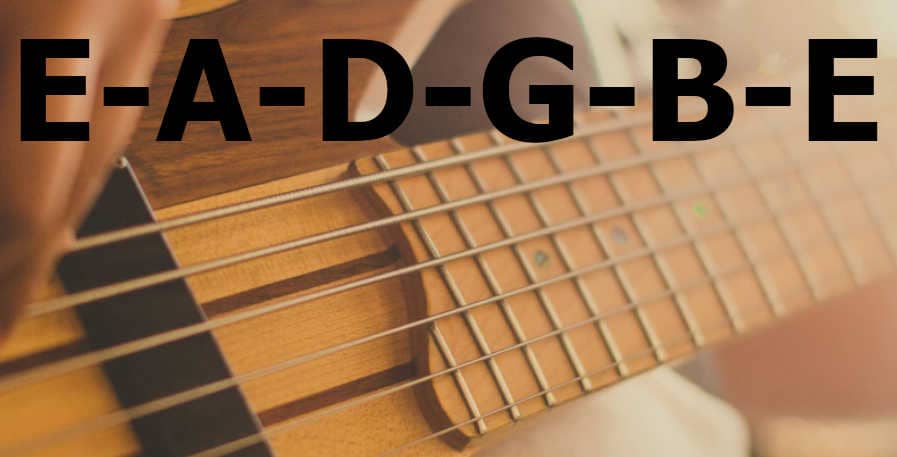Different paths lead bassists to tune their 6-string basses like guitars.
You might be a guitarist making the switch to bass and want to retain your knowledge of the fretboard. You might be a bassist that doesn`t need the extra low-end range and wants to focus on writing melodic bass lines.
Either way, you are in good company. Many successful bassists have tuned their basses to E-A-D-G-B-E and had successful careers.
However, the process of setting a 6-string bass up to be tuned like a guitar is not as simple as some might think.
Therefore, I`ve written this guide to make it easy for you. I`ll show you the difference between how a 6-string bass and a guitar are tuned. Then, I`ll show you how to set up and tune your bass like a guitar. Lastly, we will take a look at what happens if you decide to use guitar strings on your bass.
Is a 6 string bass tuned the same as a guitar?
A six-string bass and a 6-string guitar utilize different standard tunings and differ in their chromatic range. 6-string basses are commonly tuned to B standard. With 24 frets this gives them a range of 0B to 5C. 6-string guitars are commonly tuned to E standard. This gives them a range of E2-E6 with 24 frets.
When we compare a 6-string bass to a 4-string, it has one additional low string and one additional high string. As for guitars, they have 2 additional high strings instead.
As a result, 6-string basses are tuned to B, while guitars are tuned to E. Here is a comparison of a guitar and 6-string bass in their respective standard tunings:

If the 6-string bass and guitar were to utilize the same tuning, they would be tuned the same way. This is the case for 7-strings guitars, which are tuned to B standard just like 5 and 6-string basses.
The range that the instruments cover is however still different because basses are tuned an octave lower than guitars.
Therefore, when a bass and a guitar are both tuned the same way, an open B would be a B0 on the bass, and a B1 on the guitar. As a result, the notes will sound the same, while differing in pitch.
Note that there’s a type of 6-string bass that already uses E as their standard tuning: Bass VIs. These are short-scale 6-string basses that are specifically designed to emulate the guitar at a lower pitch. If you don`t currently own a 6-string, these could be right up your alley.
Can you tune a 6-string bass like a guitar?
A 6-string bass can be tuned the same way as a guitar. Depending on the bass, this will require a setup and string change in order to retain the resonance and playability of the instrument. Some 6-string basses, such as the Fender VI are specifically designed to be tuned E-A-D-G-B-E like a guitar.
If you have a 6-string bass that`s tuned to B, you can tune it to E like a guitar. However, if you do so with its current strings, there is a decent chance that they will snap. Even if they don`t snap due to the high tension, the strings will feel overly tight which will affect playability.
Therefore, if you want to tune your 6-string bass to Eadgbe, the first step is to get a fitting set of strings.
For long-scale basses, there are no easily available sets of strings that are suited for E. Therefore, I recommend using this regular 4-string set as it will be suitable for the first 4 strings.
Then, the best course of action is to buy single strings for the high B and E strings. Among others, Ernie Ball has a nice selection of single strings to choose from. I recommend a .040 gauge for the B, and a .030 for the high E.
This results in a balanced set of .105-.085-.070-.050-.040-.030. As a result, your strings won`t snap when you tune your 6-string to E, and the strings will have a natural amount of tension to them.
Furthermore, it is a best practice to get your bass set up to be tuned like a guitar. Without a setup, the nut will be unfit for the new strings. You might also experience high action and intonation issues.

Can you put guitar strings on a 6 string bass?
Guitar strings can be put on a 6-string bass allowing the bass to be tuned the same way as a guitar. This will however require a nut replacement and the tone of the instrument will be different from both the bass and the guitar.
In general, you can use any type of string on a string instrument. The question we should be asking is what it is going to sound like?
Guitar strings in particular can sound amazing on a bass guitar. A medium gauge set for a 4-string bass has gauges of .105-.50. Below Charles Berthoud uses a set of Piccolo strings with gauges of .055-.020 on his bass:
So for solo play, guitar strings can give a new and refreshing tone to your bass. The strings will provide a higher tonal range, which can be used to create beautiful melodies and chord progressions.
As for playing with a band, a bass with guitar strings will be more suited to fill the role of a guitar player, rather than the role of a bassist. This is because a 6-string bass tuned like a guitar will not have a deep enough tonal range to adequately fill in the low-end frequencies. This will generally result in the band sounding too hollow.
This is not to say that it cannot be done though. There are many bands without a bassist that are successful. Just be aware that the role you will be filling is likely to be vastly different from that of a typical bassist.
Furthermore, keep in mind that the guitar strings will be too small for the filings in the nut of the bass. Guitar nuts are typically 1.65″-1.69″ (42-43mm), which is significantly narrower than 6-string bass nuts, which are ~2.04″-2.24″ (52-57mm).
The result of this is that the strings will feel sloppy and loose. You can either accept this, which is my recommendation if you are just doing this as an experiment. Alternatively, you can talk to a luthier to get a nut fitted for guitar strings if you plan on using guitar strings long-term.
Conclusion
If a low E gives you enough deep range, tuning your 6-string bass to Eadgbe makes perfect sense. This gives you a lot of flexibility in how to approach your instrument and opens up a lot of doors for how to play chords and melodies.
Keep in mind that unless you use guitar strings, the bass will still be tuned an octave lower than a guitar. Thus, bass chords can sound muddy, and deep riffs and chord progressions will sound different than on the guitar.
The good news is that you will have a lot of high range on your instrument. At higher frequencies, you will have a lot more room to incorporate melodic elements. It will also be a lot easier to add in some occasional chords with the 2 added high strings.
This will give you the best of both worlds. The low-end range of the bass lets you play deep grooves, and the high-end range of the guitar lets you add harmonic elements to a song.
With a 6-string tuned like a guitar, you can take on the role of both a bassist and a guitarist. Most musicians tend to gravitate more towards one or the other. To learn more, read these 10 reasons why people choose bass over the guitar.

